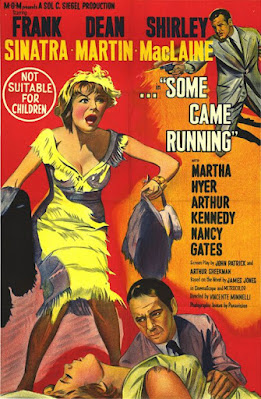It was the long, dark days of
the pandemic that introduced me to the pleasures of watching television.
Desperate for entertainment, I turned to cable-tv for long-running recent
series I’d missed, like Mad Men and Breaking Bad, but also for
sitcoms that took me back to my early years.
After giving some love to I Love Lucy, I settled on the pleasures of The Mary Tyler Moore show, which ruled the airwaves from 1970 until 1977. The show may look dated today, with its multi-camera style and laugh-happy studio audience. But back in the 1970s it was known for tackling social issues that were very much in the air. Its star, as Mary Richards, was an unmarried career gal who had the occasional romance but was much more involved with her job as the producer of a local Minneapolis TV news show. In the early seasons, she had colorful interactions with her landlady (Cloris Leachman) and her best buddy (Valerie Harper). But most episodes featured her interactions with the newsroom gang, the curmudgeonly Lou Grant (Edward Asner), the acerbic Murray Slaughter (Gavin McLeod), and the irresistibly pompous newscaster Ted Baxter (Ted Knight). The cherry on top in later years was the frequent presence of Betty White as a man-hungry TV personality known as the Happy Homemaker.
Though the series was played for laughs, at times it ventured boldly onto serious topics, like infidelity, divorce, erectile dysfunction, and even death. (The “Chuckles Bites the Dust” episode is a comedy classic, in which Mary struggles to avoid laughing at a death that occurs under bizarre circumstances..)
Network television seasons were long back then: 24 episodes of this show aired per year. There was occasional follow-through: in season 4, Lou’s wife walks out on him to find herself. Several seasons later, she’s remarrying, and Lou and Mary reluctantly attend the nuptials. But basically the episodes are self-contained: the contents of one show generally do not carry over to the next. This ends up being particularly weird at the end of the next-to-last season, when Ted and new wife Georgette, despairing of having a baby, adopt a polite seven-year-old boy who charms everyone in the news room. The kicker is that Georgette then discovers that, against all odds, she’s pregnant. When the show resumes the following season, Georgette is in the throes of giving birth during a party at Mary’s apartment. But that cute little adoptee is never mentioned. Did he run away? Did they return him to the agency?
All this comes to mind because we’ve just finished watching the first season of Hulu’s The Bear. Like The Mary Tyler Moore Show it’s an Emmy winner in the field of comedy, though it lacks anything you might call a joke. Inside of being performed in front of a live audience, this story about the running of a Chicago neighborhood restaurant is shot in cinéma vérité style, with the overlapping dialogue coming thick and fast, and home audience struggling to understand everything that’s said. (The show also consistently relies on expletives that Mary Richards has doubtless never used, or even heard.)
If The Mary Tyler Moore Show occasionally edges into darker territory, The Bear lives there fulltime. Its characters cope with the aftermath of addiction and a brother’s suicide, and shady hangers-on are always lurking around. Funny? I’m not so sure. (Neither are the Emmy voters who chose a different winner in this category for The Bear’s second season.) But the ongoing story—which doesn’t fully come together until the last episode of season 1--is fascinating, and well worth watching.








